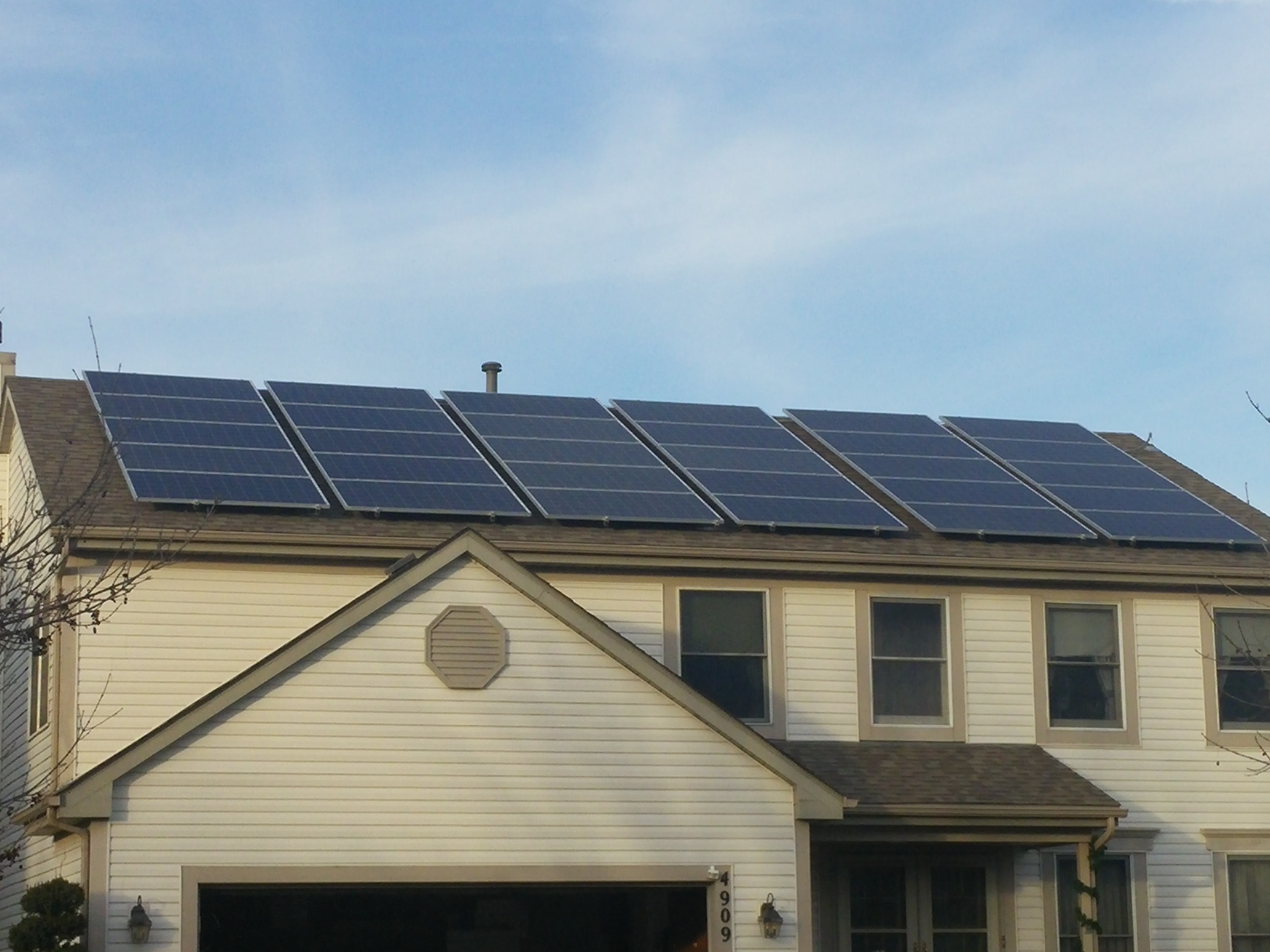Bill Thoman
Bill Thoman - Plainfield/Joliet, IL
System Details and Green Efforts:
Our system consists of 30 305 watt panels arranged in landscape orientation. We have an 8000 watt inverter. The system was commissioned in October of 2014. We project our annual production to be in excess of 12000 kw. The system supplies almost all of the energy for our home needs as well as a 2012 Nissan Leaf electric vehicle. It is a grid tied system. |
Personal Story:
My story I believe, is not unlike that of others who have come to have a conscientious reflective attitude and concern about what their carbon footprint is upon the earth. Over a number of years I have experienced an increasing awareness of the need for all of us to become increasingly sustainable.
I began tinkering with a homemade solar panel designed to keep a deep cycle 12 volt battery charged for a back up sump pump. This got expanded to include a couple of 12 volt outlets in my home that would power a small inverter in the event of a power outage.
We became intrigued with the cost/benefit analysis of owning an electric vehicle and in December of 2011 purchased a Nissan Leaf where we experienced a 150 mpg-e (equivalent) on the charging of the vehicle. It was gratifying to realize the power and transportation we had available to us was so efficient and so earth friendly. It became reinforced by the lack of noise of the vehicle and absence of toxic fumes or emissions from the vehicle.
I read some stories of folks who had solar panels using them to charge their electric vehicle and I began to focus upon making that happen for our home. Now three years after first purchasing the electric vehicle we are producing more than enough electricity to supply its requirements as well as those of our entire household.
We have put ourselves in a true position of drastically reducing and almost eliminating our carbon footprint.
What tips do you have for someone considering or moving forward with a solar installation?
Commonwealth Edison has a residential real time pricing program which, given our regular heavy electricity usage (electric vehicle) makes sense for us. We are able to defer our vehicle charging until the middle of the night when electric costs are lower.
Electric costs are generally lower during all evening hours (after dinner time). During the summer on hot summer days, electricity costs can peak and for all electricity produced during those days in excess of what the house uses, the hourly price is credited back to our account for the kwh's we use in the evening. We think it will be very beneficial for us.
The problem is that for residences that have solar arrays, a special meter is required that will measure electricity that is both coming and going. If a residence is to be enrolled in the RRTP a special two channel (rarer type) is needed. Com Ed seemed unable for months to be able to figure this out and secure the correct meter so for several months we were getting no real benefit from our solar array.
My suggestion is to enroll in the net metering program which seems to take only a week or two and then if one wants one's residence to be in RRTP apply for that program once the net metering is in place.
Another thing I would make sure as your plans for installation are progressing is to make sure your electric supplier is the primary utility company. They will not be willing to talk with you about net metering or RRTP until you are their customer as a supplier. It sometimes takes 1-2 months just to change from one supplier back to the utility company.
Contact: (Please specify in the email subject who you wish to communicate with)

